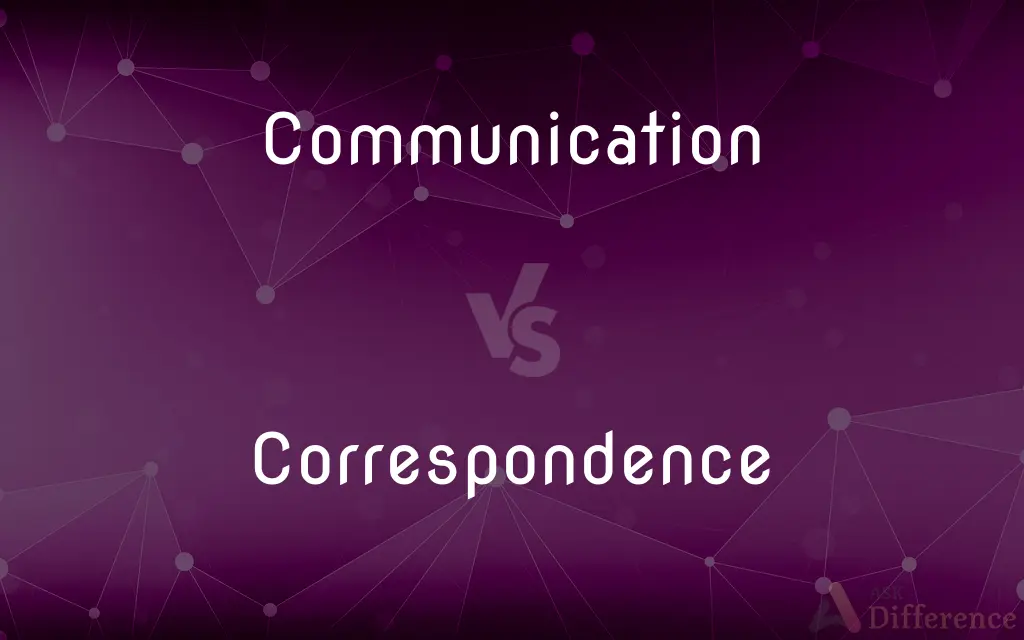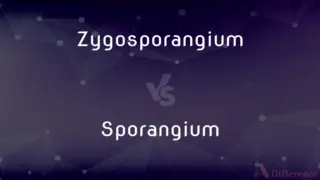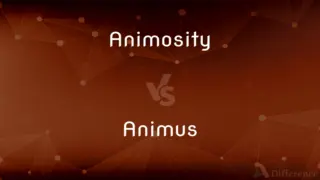Communication vs. Correspondence — What's the Difference?
By Tayyaba Rehman — Updated on November 5, 2023
Communication is the act of exchanging information, while correspondence is the exchange of letters or messages.

Difference Between Communication and Correspondence
Table of Contents
ADVERTISEMENT
Key Differences
Communication encompasses the broad process of sharing information, ideas, emotions, and messages between people. It can take many forms, from speech and writing to gestures and visual arts, and it is fundamental to social interaction. Correspondence, on the other hand, refers specifically to the exchange of written communication, traditionally through letters, emails, or other forms of messaging. While communication can be instantaneous, correspondence often implies a delayed exchange.
Communication is inherently dynamic and can be both formal and informal. It includes verbal, non-verbal, and digital interactions across various platforms. Correspondence, while it falls under the umbrella of communication, suggests a more formal and documented exchange of information. It typically involves a structured format and is used for more official or traditional purposes.
While communication is integral to human connection and can occur across various channels and formats, correspondence is typically more deliberate and preserved. Communication can be fleeting and may not be recorded, but correspondence creates a permanent record of the exchange and is often retrievable for future reference.
Communication can be immediate and interactive, such as in conversations or video calls, facilitating a real-time exchange of ideas. Correspondence, historically, has been asynchronous, allowing the recipient to consider and respond at their own pace. However, modern correspondence through email or instant messaging can also facilitate immediate communication.
The essence of communication lies in its ability to connect individuals and convey meaning, regardless of the medium. Correspondence, as a subset of communication, captures the essence of this exchange in a tangible format, providing a historical footprint of interactions between individuals or entities.
ADVERTISEMENT
Comparison Chart
Medium
Can be verbal, non-verbal, or digital
Typically written or typed messages
Formality
Can be formal or informal
Usually formal and structured
Speed
Can be instant or delayed
Often implies a delay
Record
May not be recorded
Creates a permanent record
Interaction
Can be interactive or one-way
Primarily one-way with delayed response
Compare with Definitions
Communication
The exchange of thoughts or messages.
Nonverbal communication can often convey more than words.
Correspondence
Communication by exchanging letters or emails.
They maintained their friendship through regular correspondence.
Communication
The process of conveying meanings from one entity to another.
Through communication, they resolved their differences.
Correspondence
The letters or emails sent or received.
His correspondence with the author was later published.
Communication
Communication (from Latin communicare, meaning "to share"or "to be in relation with") is "an apparent answer to the painful divisions between self and other, private and public, and inner thought and outer word." As this definition indicates, communication is difficult to define in a consistent manner, because it is commonly used to refer to a wide range of different behaviors (broadly: "the transfer of information"), or to limit what can be included in the category of communication (for example, requiring a "conscious intent" to persuade). John Peters argues the difficulty of defining communication emerges from the fact that communication is both a universal phenomena (because everyone communicates), and a specific discipline of institutional academic study.One possible definition of communication is the act of developing meaning among entities or groups through the use of sufficiently mutually understood signs, symbols, and semiotic conventions.
Correspondence
A close similarity or connection.
There is a direct correspondence between diet and health.
Communication
The act of communicating; transmission.
Correspondence
The activity of writing letters.
Before email, correspondence was the primary means of distant communication.
Communication
The exchange of thoughts, messages, or information, as by speech, signals, writing, or behavior.
Correspondence
The act, fact, or state of agreeing or conforming
The correspondence of the witness's statement with the known facts suggests that he is telling the truth.
Communication
Interpersonal rapport.
Correspondence
A similarity, connection, or equivalence
Is there a correspondence between corporal punishment in children and criminal behavior in adults?.
Communication
The art and technique of using words effectively to impart information or ideas.
Correspondence
Communication by the exchange of letters, emails, or other forms of written messages.
Communication
The field of study concerned with the transmission of information by various means, such as print or broadcasting.
Correspondence
The messages sent or received.
Communication
Any of various professions involved with the transmission of information, such as advertising, broadcasting, or journalism.
Correspondence
Mutual communication or discourse:
Communication
Something communicated; a message.
Correspondence
Friendly discussion.
Communication
A system, such as mail, telephone, or television, for sending and receiving messages.
Correspondence
(uncountable) Reciprocal exchange of civilities, especially conversation between persons by means of letters.
Communication
A network of routes for sending messages and transporting troops and supplies.
Correspondence
(uncountable) Newspaper or news stories.
Communication
Communications The technology employed in transmitting messages.
Correspondence
Postal or other written communications.
Communication
(Biology) The transfer of information from one molecule, cell, or organism to another, as by chemical or electrical signals or by behaviors.
Correspondence
Congruity or similarity between different things, people, etc:
Communication
An opening or connecting passage between two structures.
Correspondence
(countable) An agreement of situations or objects with an expected outcome.
Communication
A joining or connecting of solid fibrous structures, such as tendons and nerves.
Correspondence
A relation.
Communication
The act or fact of communicating anything; transmission.
Communication of smallpox
Communication of a secret
Correspondence
A similarity between physical and spiritual things e.g. light to wisdom, or warmth to love
Communication
(uncountable) The concept or state of exchanging data or information between entities.
Some say that communication is a necessary prerequisite for sentience; others say that it is a result thereof.
The node had established communication with the network, but had as yet sent no data.
Correspondence
Friendly intercourse; reciprocal exchange of civilities; especially, intercourse between persons by means of letters.
Holding also good correspondence with the other great men in the state.
To facilitate correspondence between one part of London and another, was not originally one of the objects of the post office.
Communication
A message; the essential data transferred in an act of communication.
Surveillance was accomplished by means of intercepting the spies' communications.
Correspondence
The letters which pass between correspondents.
Communication
The body of all data transferred to one or both parties during an act of communication.
The subpoena required that the company document their communication with the plaintiff.
Correspondence
Mutual adaptation, relation, or agreement, of one thing to another; agreement; congruity; fitness; relation.
Communication
An instance of information transfer; a conversation or discourse.
The professors' communications consisted of lively discussions via email.
Correspondence
Communication by the exchange of letters
Communication
A passageway or opening between two locations; connection.
A round archway at the far end of the hallway provided communication to the main chamber.
Correspondence
Compatibility of observations;
There was no agreement between theory and measurement
The results of two tests were in correspondence
Communication
(anatomy) A connection between two tissues, organs, or cavities.
Correspondence
The relation of correspondence in degree or size or amount
Communication
(obsolete) Association; company.
Correspondence
A function such that for every element of one set there is a unique element of another set
Communication
Participation in Holy Communion.
Correspondence
Communication by exchange of letters
Communication
(rhetoric) A trope by which a speaker assumes that his hearer is a partner in his sentiments, and says "we" instead of "I" or "you".
Correspondence
(mathematics) an attribute of a shape or relation; exact correspondence of form on opposite sides of a dividing line or plane
Communication
The act or fact of communicating; as, communication of smallpox; communication of a secret.
Correspondence
Similarity by virtue of correspondence
Communication
Intercourse by words, letters, or messages; interchange of thoughts or opinions, by conference or other means; conference; correspondence.
Argument . . . and friendly communication.
Correspondence
Written communication, especially when formal and systematic.
The attorney reviewed the correspondence for legal implications.
Communication
Association; company.
Evil communications corrupt good manners.
Communication
Means of communicating; means of passing from place to place; a connecting passage; connection.
The Euxine Sea is conveniently situated for trade, by the communication it has both with Asia and Europe.
Communication
That which is communicated or imparted; intelligence; news; a verbal or written message.
Communication
Participation in the Lord's supper.
Communication
A trope, by which a speaker assumes that his hearer is a partner in his sentiments, and says we, instead of I or you.
Communication
The activity of communicating; the activity of conveying information;
They could not act without official communication from Moscow
Communication
Something that is communicated by or to or between people or groups
Communication
A connection allowing access between persons or places;
How many lines of communication can there be among four people?
A secret passageway provided communication between the two rooms
Communication
The act of transmitting information.
Effective communication is key to a successful team.
Communication
The imparting or interchange of thoughts, opinions, or information.
The conference facilitated communication between experts.
Communication
The successful conveying or sharing of ideas and feelings.
Good communication helps in building strong relationships.
Common Curiosities
What is communication?
Communication is the process of sharing information, ideas, and feelings between people.
Can communication be non-verbal?
Yes, communication includes non-verbal forms like gestures, facial expressions, and body language.
How does email fit into correspondence?
Email is a modern form of correspondence, allowing for written communication that can be both formal and informal.
What’s the role of technology in modern correspondence?
Technology has greatly expanded the speed, format, and reach of correspondence, making it more immediate and accessible.
Do all forms of communication involve language?
Not necessarily, as non-verbal cues and visual media can also communicate messages without language.
Is communication always intentional?
Communication can be both intentional and unintentional.
What does correspondence mean?
Correspondence refers to the exchange of messages, typically written, between two parties.
Is correspondence always written?
Traditionally, yes, but it can also include digital formats like email.
Can correspondence be informal?
While it tends to be more formal, correspondence can sometimes be informal, especially in emails or messages to acquaintances.
Is social media considered a form of communication or correspondence?
Social media is a form of communication that can include elements of correspondence when messages are exchanged.
What is the purpose of correspondence?
The purpose is to exchange information, maintain relationships, or fulfill formal obligations.
Does communication include the mass media?
Yes, mass media like television and radio are forms of communication.
Is correspondence a form of communication?
Yes, correspondence is a specific type of communication, usually denoting a formal written exchange.
Does communication require a response?
Not always; communication can be one-way, like a broadcast, but it often invites a response.
Can correspondence be verbal?
Traditionally, correspondence is written, but the term can be loosely used for systematic verbal exchanges in some contexts.
Share Your Discovery

Previous Comparison
Zygosporangium vs. Sporangium
Next Comparison
Animosity vs. AnimusAuthor Spotlight
Written by
Tayyaba RehmanTayyaba Rehman is a distinguished writer, currently serving as a primary contributor to askdifference.com. As a researcher in semantics and etymology, Tayyaba's passion for the complexity of languages and their distinctions has found a perfect home on the platform. Tayyaba delves into the intricacies of language, distinguishing between commonly confused words and phrases, thereby providing clarity for readers worldwide.













































